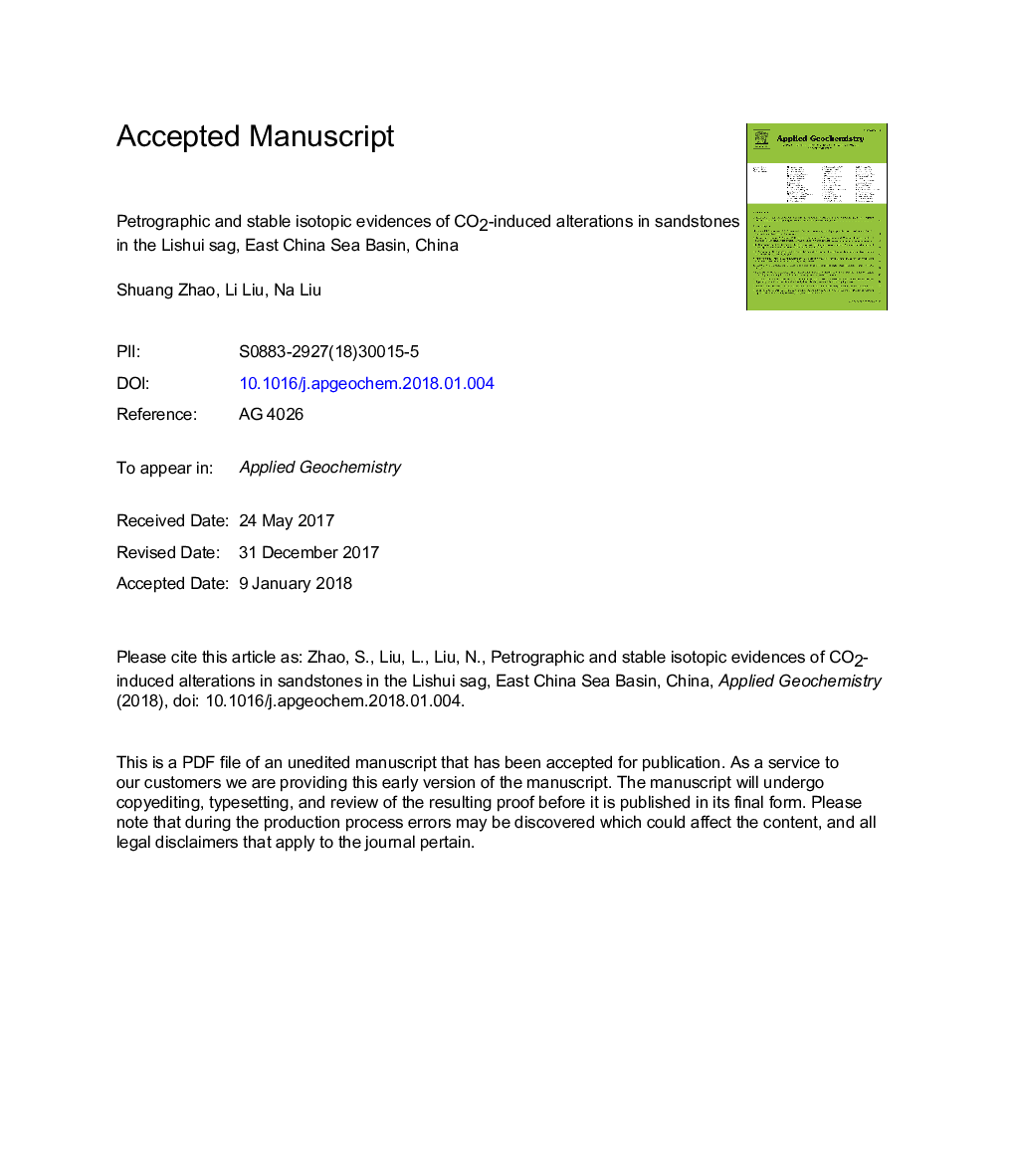| Article ID | Journal | Published Year | Pages | File Type |
|---|---|---|---|---|
| 8863181 | Applied Geochemistry | 2018 | 47 Pages |
Abstract
Dawsonite-bearing sandstones in the Lishui sag, East China Sea Basin, China, have been investigated as a natural occurrence for CO2-induced diagenesis using petrography, X-ray diffraction and stable isotopes. The sandstones are predominantly litharenite, with the order of cements growth comprising clay coatings and pyriteâ
, siderite, pyriteâ
¡, quartz overgrowths, ankerite, kaolinite and microcrystalline quartz, dawsonite and late calcite. Dawsonite, which has recently been considered as trapping mineral after massive CO2 charging, constituted up to 7% of the whole rock volume, occurring as pore-filling clusters or replacement of detrital grains. Stable isotopic data suggest that the CO2 in equilibrium with dawsonite and calcite display a mantle-magmatic origin and is in close proximity to those of the CO2 gas now present in the reservoir, indicating the same origin for both. The elevated CO2 concentrations induced by a mass influx of magmatic CO2 into host rock was favourable for dawsonite cementation. Plagioclase was then considered as the precursor of dawsonite. K-feldspar could also serve as the aluminum source of dawsonite with an external supply of Na+ in a geochemically open system.
Keywords
Related Topics
Physical Sciences and Engineering
Earth and Planetary Sciences
Geochemistry and Petrology
Authors
Shuang Zhao, Li Liu, Na Liu,
